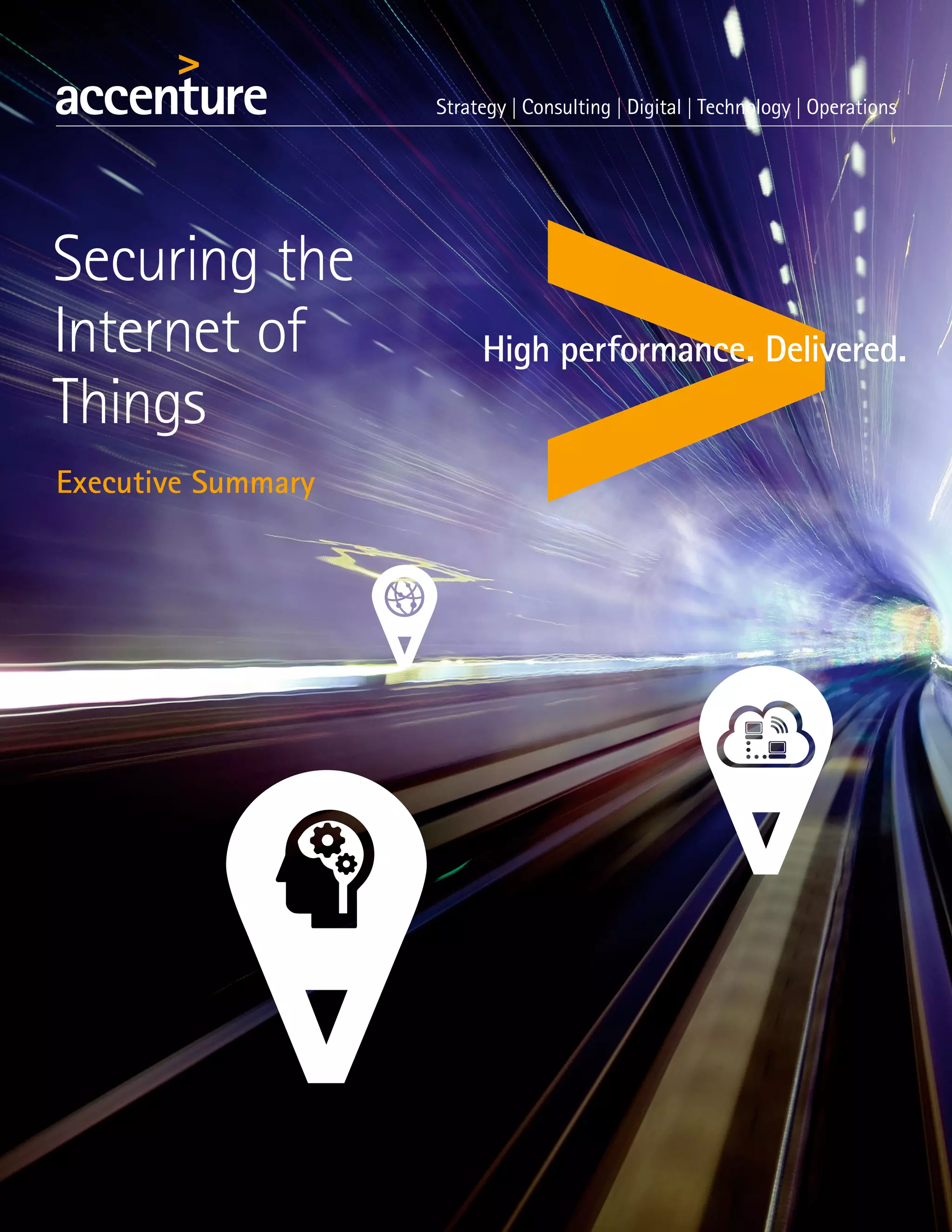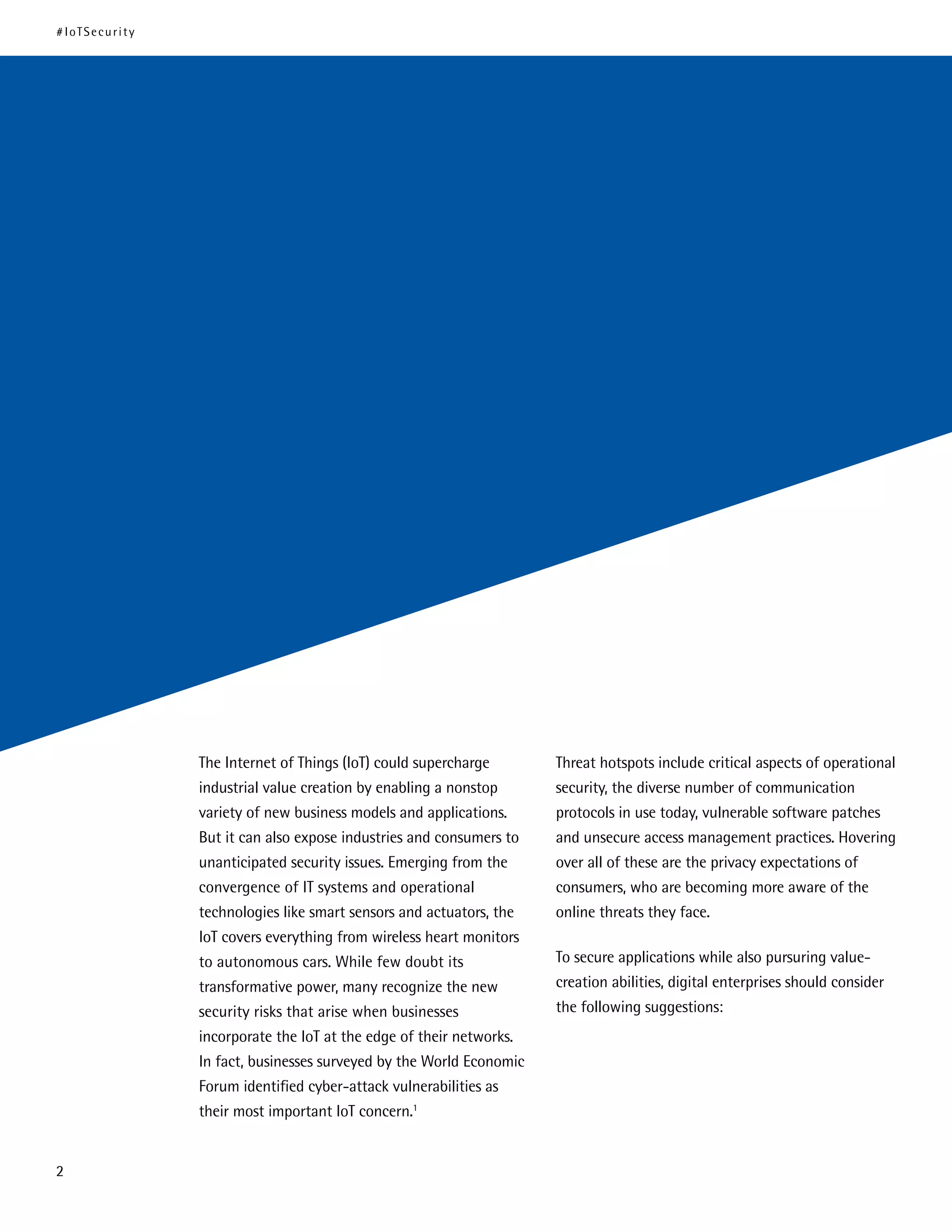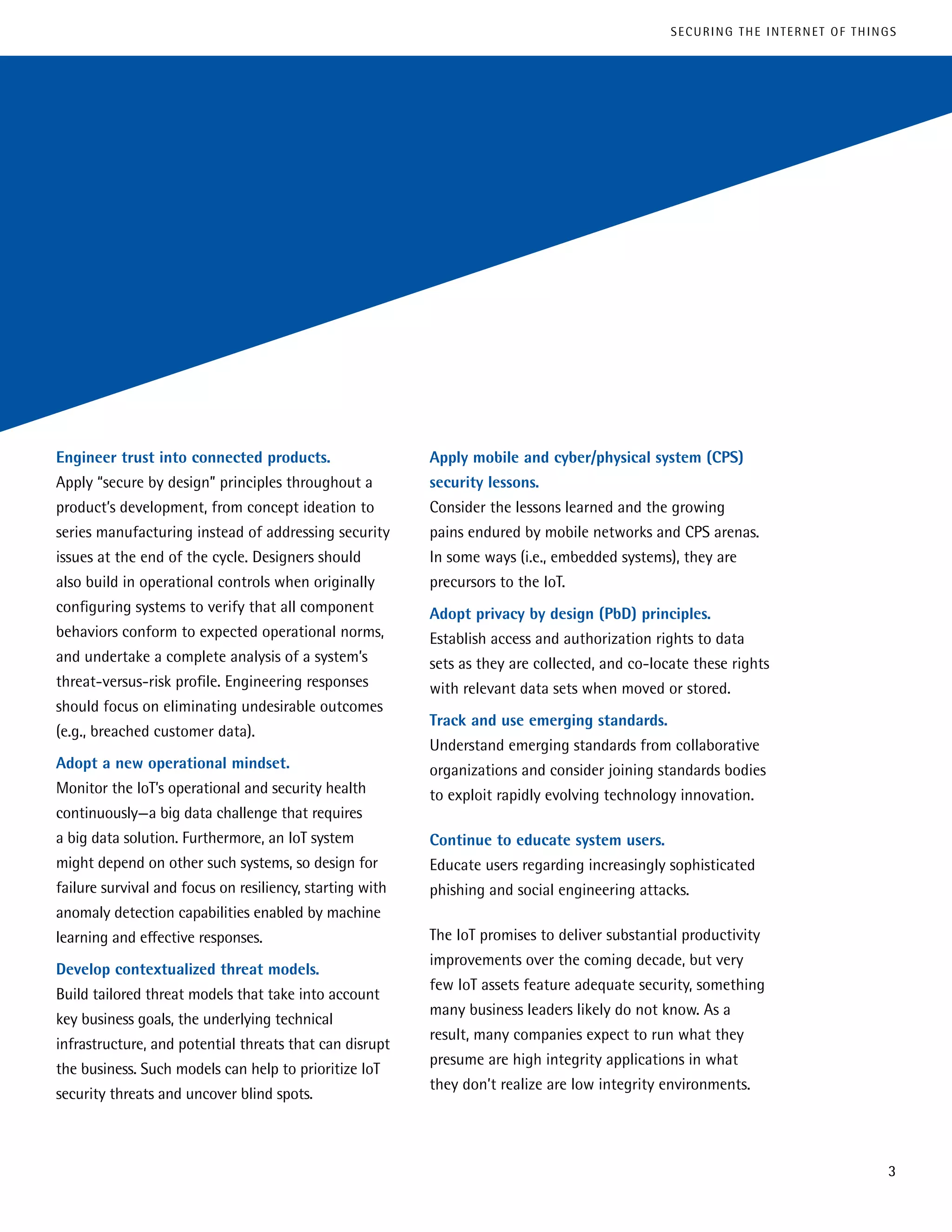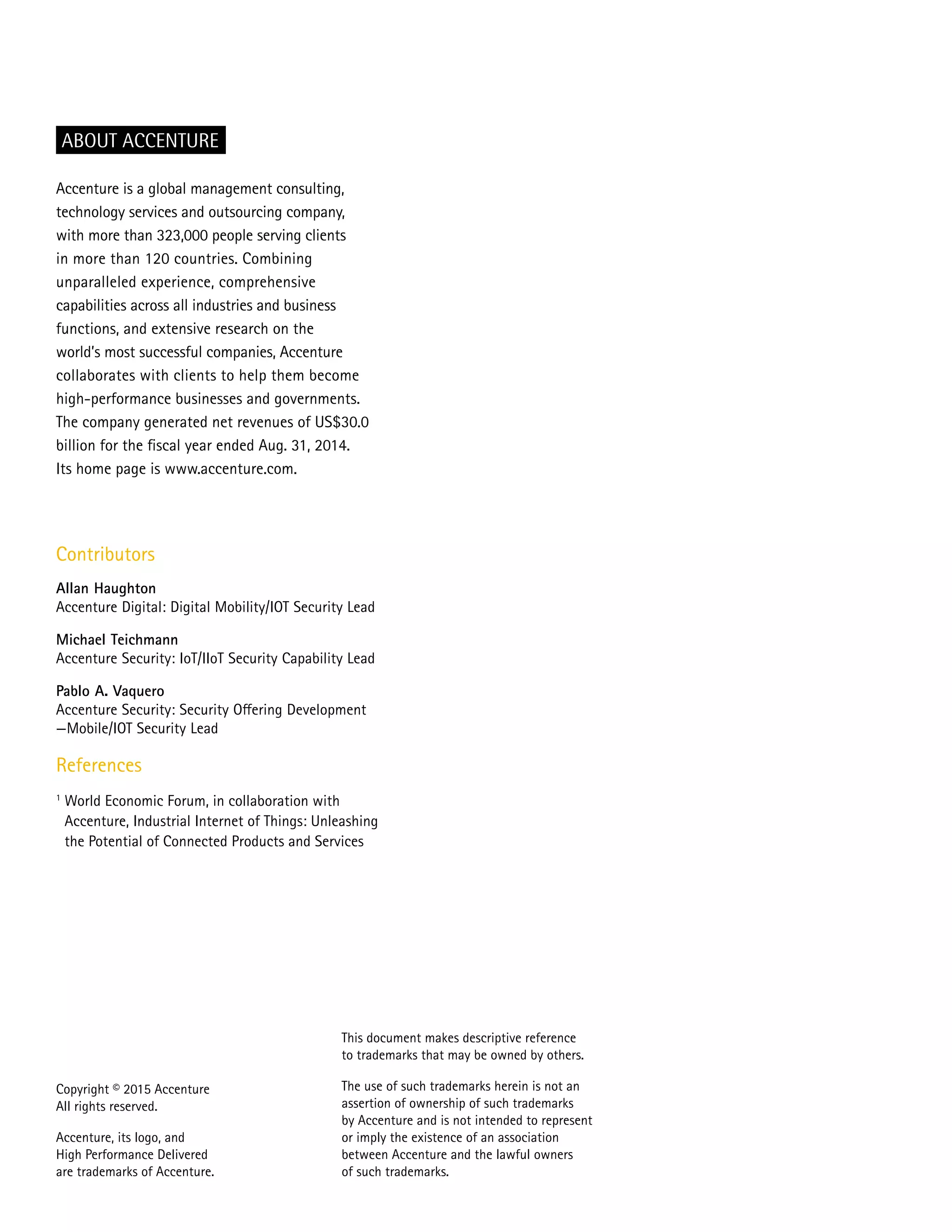The document discusses the transformative power of the Internet of Things (IoT) while highlighting significant security risks that accompany its adoption. It emphasizes the importance of integrating security measures from the development phase and continuously monitoring IoT operational health to mitigate vulnerabilities. Recommendations include adopting 'secure by design' principles, developing contextualized threat models, and educating users on security threats.



